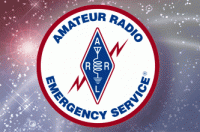|
Welcome,
Guest
|
TOPIC:
A Simple DMR Primer (W1HAF) 9 years 5 months ago #489
|
Wayne - N1CLV writes:
We are all pretty much “newbies” when it comes to DMR. We are learning fast, but there is a lot to learn about Time Slots, Color Codes, Talk Groups, etc! Some folks (like Harrison W1HAF) have been working hard to understand all of the various nuances involved. His explanation below may be useful to you and your ARES members and Club members — please share this with them! “TS” stands for “time slot”. From: Harrison Fortier <[email protected]> Reply-To: Harrison Fortier <[email protected]> Subject: Simple DMR Primer Hi All, I'm not sure how much you all know about DMR but I figured I would share what I have learned. North America keys up every repeater on TS1 on the network. This will tie up TS1 including all other talk groups that share the time slot. i.e. World Wide, World Wide English, and Northeast. (400 plus repeaters) New England Wide, or Southern New England(SNE), Northern New England are on TS2 and are regional. They only key up the repeaters that carry them on their network. The simple definition is that TS1 is international and national while TS2 is regional and statewide. Its better to use TS2 talk groups for local chatting so as not to tie up all the repeaters on the network worldwide. The European repeaters use World Wide, World Wide English, and some use North America but not all. So they may not know if TS1 is being used. This is why all the CT ARES DMR repeaters use TS2 for only the Regional ARES talk groups and why they do not carry the DMR-MARC TS2 talk groups. This ensures that TS 2 is available statewide for communications and not being tied up. TAC 310 makes a link from repeater to repeater only tying up two repeaters rather than the whole network. You still need to make sure that the time slot you are using it on is not in use. TAC 310 like many other talk groups is not carried on all repeaters. It is up to the repeater operators preference on what network they belong to and which talk groups they may carry on their system. In D-Star we set the repeater to one Reflector and can talk to whoever else connects to that reflector. DMR is like being connected to multiple reflectors at the same time. (4 or more) That is why when you make a DMR code plug you should include all the talk groups that share the same Time Slot in your receive groups so that you can hear if that time slot is in use before you transmit. Otherwise you may experience interrupted qso's when some else talks on another talk group on the same time slot. It took me a while to figure this all out. Laws of Physics: two stations can't occupy the same Time Slot at the same time. They can however occupy two separate Time Slots at once. Hope this is helpful. Harrison A. Fortier, JR. W1HAF |
|
Please Log in or Create an account to join the conversation. |
Time to create page: 0.178 seconds
